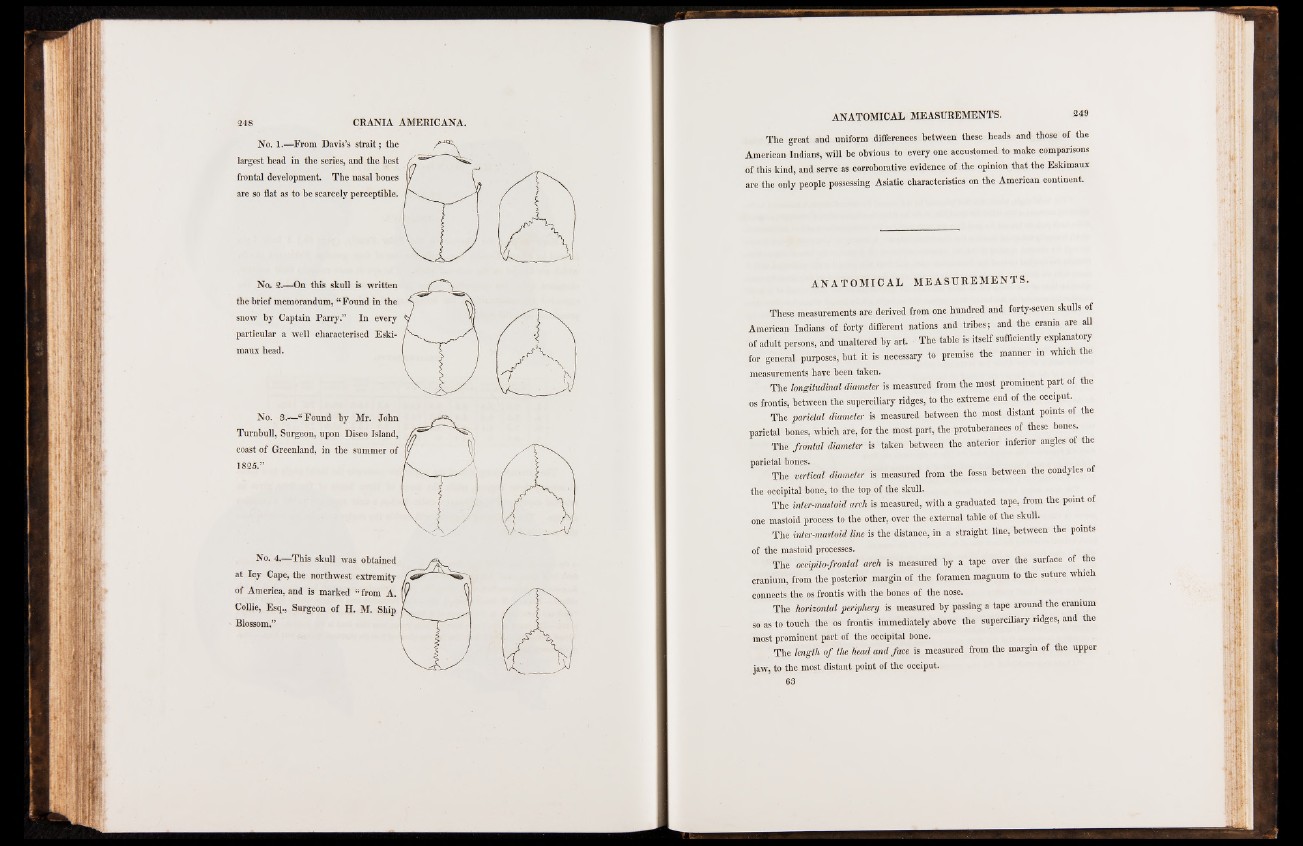
No. 1 .—From Davis’s strait; the
largest head in the series, and the best
frontal development. The nasal hones
are so flat as to he scarcely perceptible.
Nou 2.—On this skull is written
the brief memorandum, “ Found in the
snow by Captain Parry.” In every
particular a well characterised Eski-
maux head.
No. 3.—“ Found by Mr. John
Turnbull, Surgeon, upon Disco Island,
coast of Greenland, in the summer of
1825.”
No. 4.—This skull was obtained
at Icy Cape, the northwest extremity
of America, and is marked “ from A.
Collie, Esq,, Surgeon of H. M. Ship
Blossom,”
The great and uniform differences between these heads and those of the
American Indians, will be obvious to every one accustomed to make comparisons
of this kind, and serve as corroborative evidence of the opinion that the Eskimaux
are the only people possessing Asiatic characteristics on the American continent
A N A T OM I C A L M E A S U R EM E N T S .
These measurements are derived from one hundred and forty-seven skulls of
American Indians of forty different nations and tribes; and the crania are all
of adult persons, and unaltered by art. The table is itself sufficiently explanatory
for general purposes, but it is necessary to premise the manner in which the
measurements have been taken.
The longitudinal diameter is measured from the most prominent part of the
os frontis, between the superciliary ridges, to the extreme end of the occiput.
The parietal diameter is measured between the most distant points of the
parietal hones, which are, for the most part, the protuberances of these bones.
The frontal diameter is taken between the anterior inferior angles of the
parietal bones.
The vertical diameter is measured from the fossa between the condyles o
the occipital bone, to the top of the skull.
The inter-mastoid arch is measured, with a graduated tape, from the point of
one mastoid process to the other, over the external table of the skull.
The inter-mastoid line is the distance, in a straight line, between the points
of the mastoid processes.
The occipitofrontal arch is measured by a tape over the surface of the
cranium, from the posterior margin of the foramen magnum to the suture which
connects the os frontis with the bones of the nose.
The horizontal periphery is measured by passing a tape around the cranium
so as to touch the os frontis immediately above the superciliary ridges, and the
most prominent part of the occipital bone.
The length o f the head and face is measured from the margin of the upper
jaw, to the most distant point of the occiput.
63